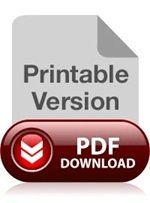According to OSHA (Occupational Safety and Health Administration), millions of workers are exposed to potentially damaging noise at work each year. While we tend to think of the health repercussions of hearing loss first, as we should, there are also negative financial effects to consider, particularly in the workplace.
Last year alone, fines and penalties against businesses that didn’t adequately protect their workers from high noise levels exceeded $1.5 million. On top of that, another $242 million can be added each year in worker’s compensation for hearing loss disability claims.
The World Health Organization in 2017 estimated that, globally, societal costs (social isolation, communication difficulties and stigma) associated with unattended hearing loss were as high as $573 billion each year.
The sad truth is that most incidences of workplace hearing loss can be avoided, and it begins with awareness.
Signs That Workplace Noise Is Too Loud
There are several signals indicating that your workplace noise is excessive. For instance, is your site louder than busy city traffic? Or are your employees experiencing one or more of these signs:
- Ringing in ears after they leave work
- A work environment in which one must shout to be heard when arm’s length away
- Temporary hearing loss after work
If, after further assessment, you determine that your workplace noise needs testing, the next question is:
How Loud is too Loud?
When measuring sounds to determine safe levels, there are two considerations: The decibel (dB) level and the time of exposure. The higher the decibel level, the shorter the length of time one should be exposed to it.
OSHA has set the limit for an eight-hour day at 90 dB. It’s not ideal, but it is acceptable. The real problems occur when you go above 90. OSHA estimates that for every increase of 5 dB, you should have a 50 percent reduction in exposure time. Which means that at 95 dB, you should limit your exposure to four hours.
Imagine you’re a bartender at a nightclub that routinely measures 110 dB. Your recommended exposure time is just 30 minutes. Anything over half an hour, without adequate protection, will put your hearing at greater risk.
How to Measure Workplace Noise
There are a variety of instruments used to evaluate noise levels, depending on the type of noise being measured and the information needed. However, you may not need fancy equipment initially, as technological advances have made it so that anyone with a mobile phone can measure the decibel levels of sounds.
While phone apps may not be the most professional option, they can certainly help you identify whether a real problem exists. There are a few apps with good ratings – Decibel X and Sound Meter – and even one by The National Institute for Occupational Safety and Health (NIOSH): NIOSH Sound Level Meter App.
How to Reduce Your Workplace Noise Hazard
If you’ve measured your workplace noise levels and have determined them to be unsafe, the next step is putting a plan into place for reducing that risk. There are four distinct areas that require consideration.
Noise Controls
Noise controls are equipment that’s sole job is to deflect or absorb sound coming off other equipment. Baffles and hoods constructed of noise-absorbing materials are two examples of noise controls.
Engineering Controls
Engineering controls involve reducing the noise levels of equipment and machinery by modifying, updating, or replacing equipment or parts. Integrating new technology could also qualify as an engineering control.
Administrative Controls
Administrative controls are in place to limit employee exposure. Examples would include running the noisiest equipment during times when there are fewer employees, instituting area or machinery time-limits for employees most at risk, and creating quiet areas where employees can relax.
Protective Gear
Protective gear like ear plugs and ear muffs are easy-to-implement safety measures that everyone should be using if their workplace noise levels are dangerously high. It’s also the only measure that puts employees in control.
The responsibility of keeping our workplaces safe falls on all of us; employees and employers alike. For employees, a future of hearing loss is a future full of struggles and challenges that could have been avoided simply by wearing proper gear.
For employers, the fiscal cost of doing nothing may actually be greater than doing something. And when you add in the human side of hearing loss, doing something – as in protecting your employees’ hearing health – isn’t just the smart thing to do, it’s the right thing to do.
Looking to take your hearing conservation program to the next level? The RA660 from Tremetrics is an industrial audiometer that comes with a fully integrated bio-acoustics simulator and Tremetrics’ patented HearCon software. With the ability to test up to eight employees at once, it allows you to quickly and efficiently test up to eight patients at once and store all test results digitally. Get in touch with us today to learn more and request a quote!
Get Quote

About the Author
Adam is the Digital Marketing Coordinator at e3 Diagnostics. His interest in hearing healthcare is driven by his passion for music because he feels everyone should be able to clearly listen to Pet Sounds at least once in their life. In his free time, he enjoys playing video games, digging through record stores for classic vinyl, shooting hoops, and writing stories.